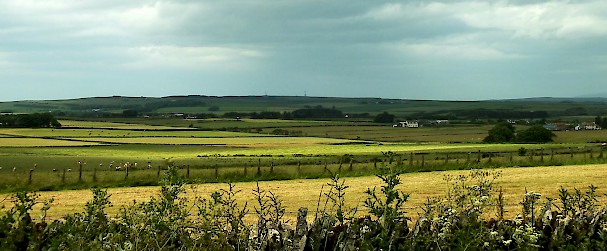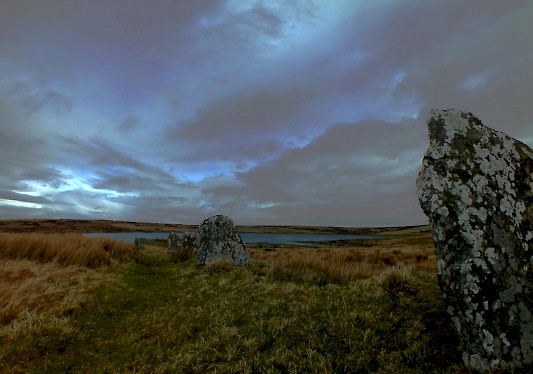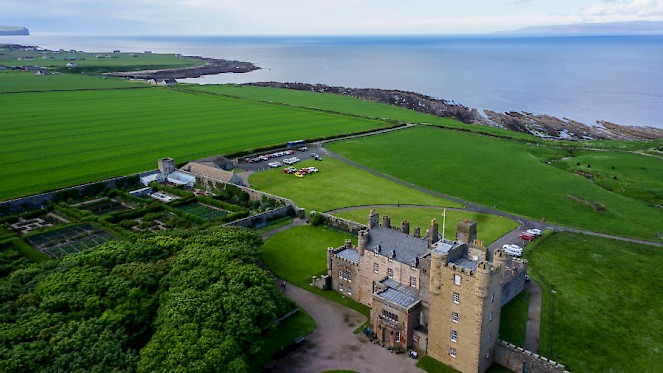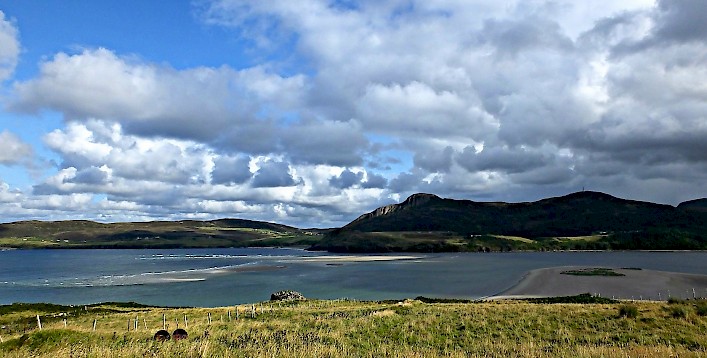Explore
Explore
Caithness and Sutherland in Scotland are one of the last true wild lands in Britain. Our landscape has soaring sea cliffs and long sandy beaches; low-level fertile farmland and rugged mountainous terrain with superb panoramic mountain views, plus twisting roads and foaming rivers and stunning lochs. Within our rich heritage you’ll find hundreds of ruined castles and ancient monumentsCaithness
View our area guides for Caithness:

Caithness is often described as ‘the low lands beyond the Highlands’ and is known for its wide open spaces and big skies.
Along the coastline, dramatic coastal scenery can be seen with spectacular geos, sea stacks and caves. During the summer months, the cliff tops support internationally important colonies of seabirds. Along the coast, in the little harbours along the east side are the remenants of the great herring industry which attracted many from all over the country to work.

Morven, Maiden Pap and the Scarabens dominate the landscape to the south of the county offering great vistas from the peaks of the entire county and beyond.

Caithness is home to some of the most spectacular and nationally important archaeology in the country ranging from the sites of the Mesolithic hunters and gatherers to the Broch builders including the mysterious stone rows mainly found on the east coast of Caithness

Discover the beauty of Highland Time in the following video:
Sutherland
View our area guides for Sutherland:

Sutherland is a land registration county and lieutenancy area in the Highlands of Scotland. Its county town is Dornoch. It borders Caithness to the east, Ross-shire and Cromartyshire to the south and the Atlantic Ocean to the north and west.
The name Sutherland dates from the era of Norse rule and settlement over much of the Highlands and Islands, under the rule of the jarl of Orkney. Although it contains some of the northernmost land in the island of Great Britain, it was called Suðrland ("southern land") from the standpoint of Orkney and Caithness.
East Sutherland
This area has a very varied landscape. Standing at the Crask Inn, at the very centre of the county, you can gaze over Flow country where red throated divers and greenshank nest and hen harriers hunt. Travelling East you reach the upper reaches of the Dornoch Firth where you can find the Spinningdale woods, with stands of oak and a wonderful pine wood. The wood plays host to crossbills and black grouse. If you’re very fortunate you may see roe and red deer or even pine marten.
At the mouth of the firth lies the sand dune system at Dornoch. Full of wildflowers in the summer and home to a colony of small blue butterflies. Further up the coast is the national nature reserve at Loch Fleet. Within the pine woods here you can find one flowered wintergreen, twinflower and creeping lady’s tresses. In summer you will see ospreys fishing here. In the winter the loch itself is a feeding ground for hundreds of wigeon, redshank and curlew. You will also find shelduck, bar tailed godwit and ringed plover.

Assynt
Often referred to as one of the last truly wild places in Europe, Assynt has a unique assemblage of habitats, wildlife & flora. From the wild Atlantic coastline, to the tops of the Munros, there are ancient woodlands, hidden river valleys, boggy moorland, hundreds of lochs & lochans and rocky mountains as well as the largest area of limestone hills within Scotland.
There are some great walks where you have a chance of seeing Golden Eagles and Red Deer in the hills and Otters and Black-throated Divers in the lochs. The walk to the Old Man of Stoer is great for seeing Dolphins and Whales and seabirds.
Northwest
This furthest northwest corner of the Highlands has a tremendous mix and variety of scenery, mountain and coastal habitats for a wide range of wildlife from the highest peaks of ben Hope at 927m [the most northerly ‘Munroe’] and Foinaven at 911m to wide ranging pure seashores and clean sands of sandwood bay north of Kinlochbervie and beautiful Balnakeil beach by durness. We are spoilt with numerous equally lovely if smaller beaches at Talmine and Coldbackie, plus others like Scourie which are rich in rock pools and bird life.
The huge variety of wildlife in such an area gives us soaring eagles in the hills and rare divers on the lochs, whilst otters frequent the whole coastal fringe [and inland waters]. The flora is quite splendid too; Durness limestone features our rare Scottish primrose and large areas of mountain avens – growing there at sea level. The vast Kyle of Tongue and Kyle of Durness along with the river Laxford are excellent fishing for salmon and sea trout, flowing with the fresh mountain water from pristine moorland in the hills. It’s a very fine place to be.
Sutherland has some of the most dramatic scenery in the whole of Europe, especially on its western fringe where the mountains meet the sea. These include high sea cliffs, and very old mountains composed of Precambrian and Cambrian rocks.

Much of the population is based in coastal towns, such as Helmsdale and Lochinver, which until very recently made much of their living from the rich fishing of the waters around the British Isles.
